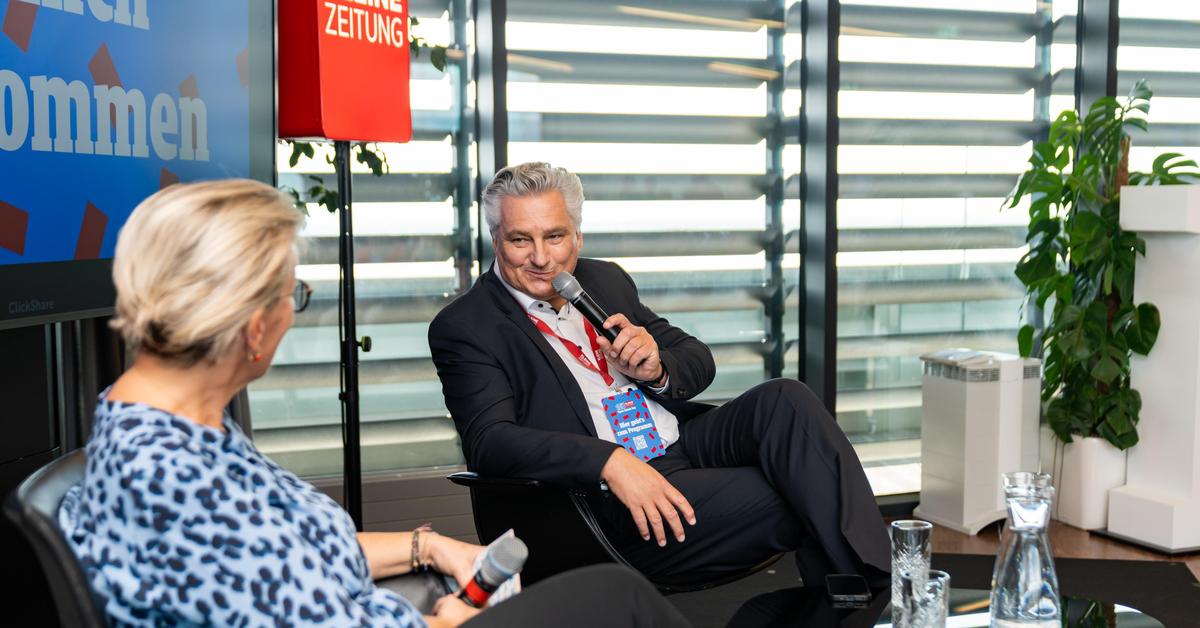“I have never seen so many people in the Skyroom,” said an overwhelmed Hubert Patterer as he stepped onto the stage above the rooftops of Graz. The Skyroom is the highest room in the Styria Media Center, which is home to the Kleine Zeitung, and the editor-in-chief invited readers to come here to exchange ideas. The crowd was huge, and that was exactly how it should be, as the 120th anniversary was all about dialogue: “The newspaper belongs to you, the readers,” the editor-in-chief immediately clarified the ownership situation – because the Kleine Zeitung is more than just a product, the close relationship between readers and the newspaper is also expressed in the slogan “Mine”.
Before the visitors could ask their questions, Hubert Patterer revealed in a conversation with Ute Baumhackl, long-time culture director and now chief reporter, that even an editor-in-chief starts small. Patterer has been part of the small editorial team for 40 years, and his first job in the Carinthian sports department was to call the region’s pubs at the weekend. “Because that’s where the referees for the lower league football matches were,” Patterer said, “and that was the only way we found out how the matches had turned out.” After many positions and departments, his path finally led him to the editor-in-chief in 2005. But what he still tells all his young colleagues today is: “Do reporting in the region, that’s the full life.”
Digitalisation as an opportunity
In his 40 years as a media maker, “everything has changed,” said Patterer: With the Internet and digitalization, media today have so many more opportunities to tell good stories and reach their readers. “Just a few minutes after the election debates have ended, our users can read what the little girl has to say about it,” said Patterer, giving a current example of the possibilities of digital narrative worlds.
Despite the digital revolution that the Kleine Zeitung has also undergone, Patterer clearly distanced himself from the echo chambers of social media: “It’s not about dialogue, but about wars of opinion,” said Patterer. In contrast, he sees the central task of a newspaper as being to show as many perspectives as possible.
Moderator Baumhackl emphasized that journalism must also face the critical scrutiny of its readers, and thus opened the podium for readers’ questions. The first thing that came was a request, followed by praise: “Please ensure that we can keep the print edition of the Kleine Zeitung for as long as possible,” asked a long-term subscriber, who immediately praised his reliable delivery person. “The print newspaper will continue!” Patterer promised without hesitation, but also admitted that it was becoming increasingly difficult to deliver the newspaper on time. After all, the delivery people cover a cumulative 32,000 kilometers every night to bring the Kleine Zeitung to people’s doors.
How independent is a newspaper?
“What is the state of the independence of the Kleine Zeitung?” a reader cross-examined the editor-in-chief and wanted to know what influence advertising clients have on the reporting. There is a “firewall” between the editorial department and advertising sales, explained the editor-in-chief, which is why it can happen that an ad for a cruise trip can appear next to an article about climate change. “I don’t experience any pressure from advertising clients and that wouldn’t work either, because readers would immediately see through such venality,” said Patterer.
A final comment underlined once again the close bond that exists between the little magazine and its readers: “I have been your subscriber for 60 years,” said a reader to the editor-in-chief, “and I hope I will remain one for some time to come.”
More about 120 years of Kleine Zeitung
